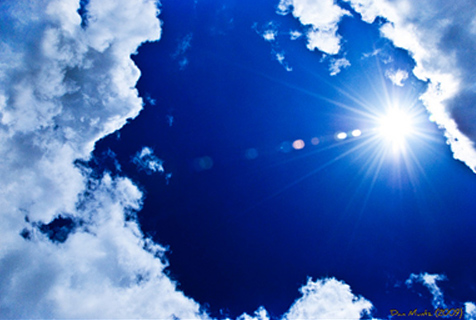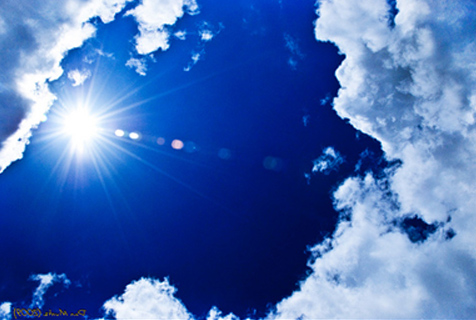|
|
|
Noon (also mid-day or noon time) is defined as 12:00, a time generally around the middle of the day when people in many countries take a lunch break. The scientific term solar noon describes the moment when the sun crosses the meridian in apparent solar time, the time when the sun is at its highest elevation in the sky. The time at which solar noon occurs depends on the longitude and date. |
The opposite of noon is midnight.
In the northern hemisphere, "noon" had an ancient geographic association with "south" (as did midnight with "north"). Remnants of the "noon" association are preserved in the words for "noon" in French ("midi") and Italian ("mezzogiorno"), both of which also refer to the southern parts of the respective countries |
| The word "noon" is derived from Latin nona hora, the ninth hour of the day, and is related to the liturgical term none. The Roman and Western European medieval monastic day began at 6:00 am (0600) by modern timekeeping, so the ninth hour started at what is now 3:00 pm (1500). In English, the meaning of the word shifted to midday and the time gradually moved back to 12:00. The change began in the twelfth century and was fixed by the fourteenth century. |
| Solar noon is the moment when the sun appears the highest in the sky (nearest zenith), compared to its positions during the rest of the day. It occurs when the Sun is transitting the celestial meridian. This is also the origin of the terms ante meridiem and post meridiem as noted below. The Sun is directly overhead at solar noon at the equator on the equinoxes; at Tropic of Cancer (latitude 23° 26' 22? N) on the June solstice; and at Tropic of Capricorn (23° 26' 22? S) on the December solstice. |
| In traditional magical thinking, both noon and its opposite, midnight, form an axis linking the mundane world with otherworlds by being apogee of light and darkness, respectively. Thus, noon is associated with heaven, order and life.. |
Touching the sacrum
Central points of day and night were seen as moments when sacrum manifests itself and epiphanies were most likely. Thus, a noon prayer, healing practice and ritual magic were thought to be most effective - if their intentions were related to themes associated with day, of course. Also, numerous plants, animals, substances and other items harvested at noon were believed to have special, magical qualities and powers helpful in ritual practices. |
| As it seems, the Sun stops its voyage at noon, where it was thought to rest for a while. By standards of magical thinking this stillness is sacred, as Otherworlds themselves are still and static. It was thought that at noon, Otherworld pristine conditions were present, bringing the state of primordial chaos to the world. |
| This resulted in the taboo of working at noon, as work is associated with culture and civilization and therefore anathema to nature and chaos. So, the act of working at noon is viewed as human will contradicting the natural (or God-given) order. As a result, in folklore there is widespread belief that working at noon is vainly and even harmful. |
| |
|


